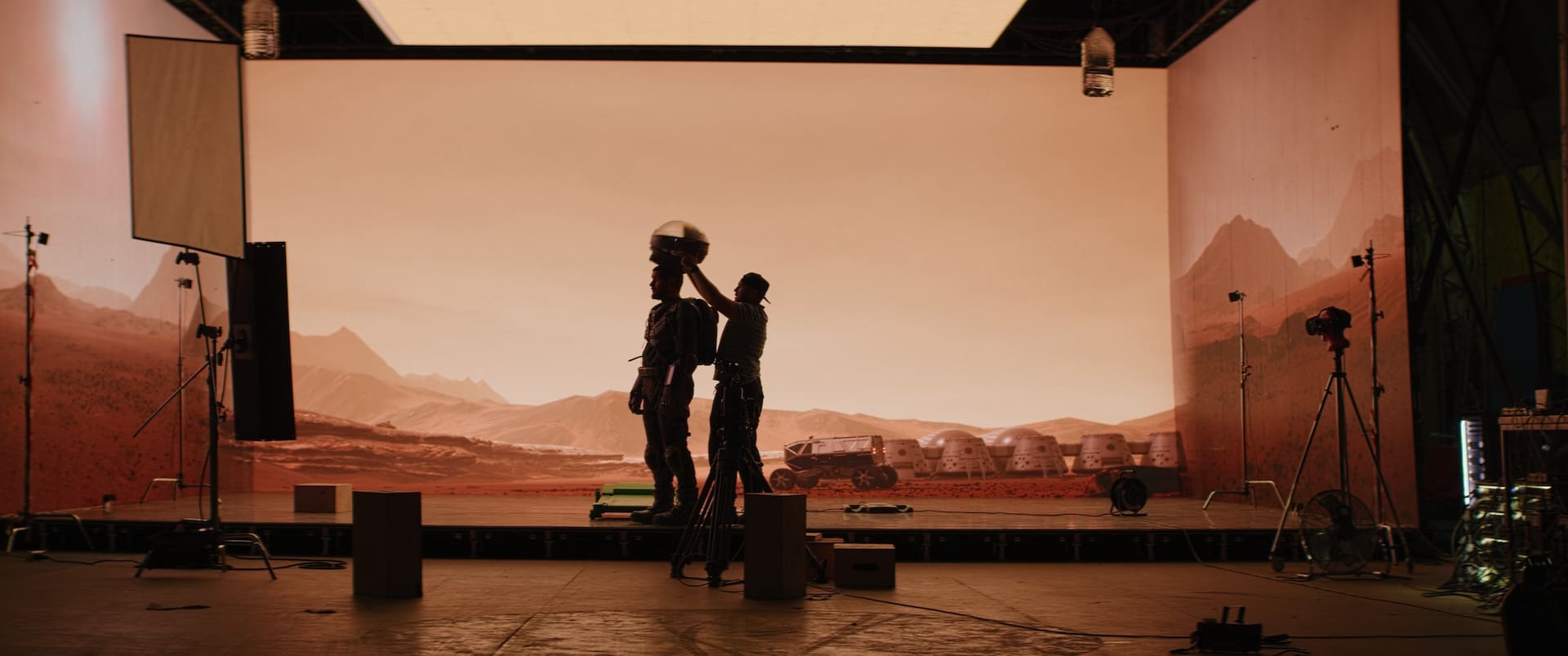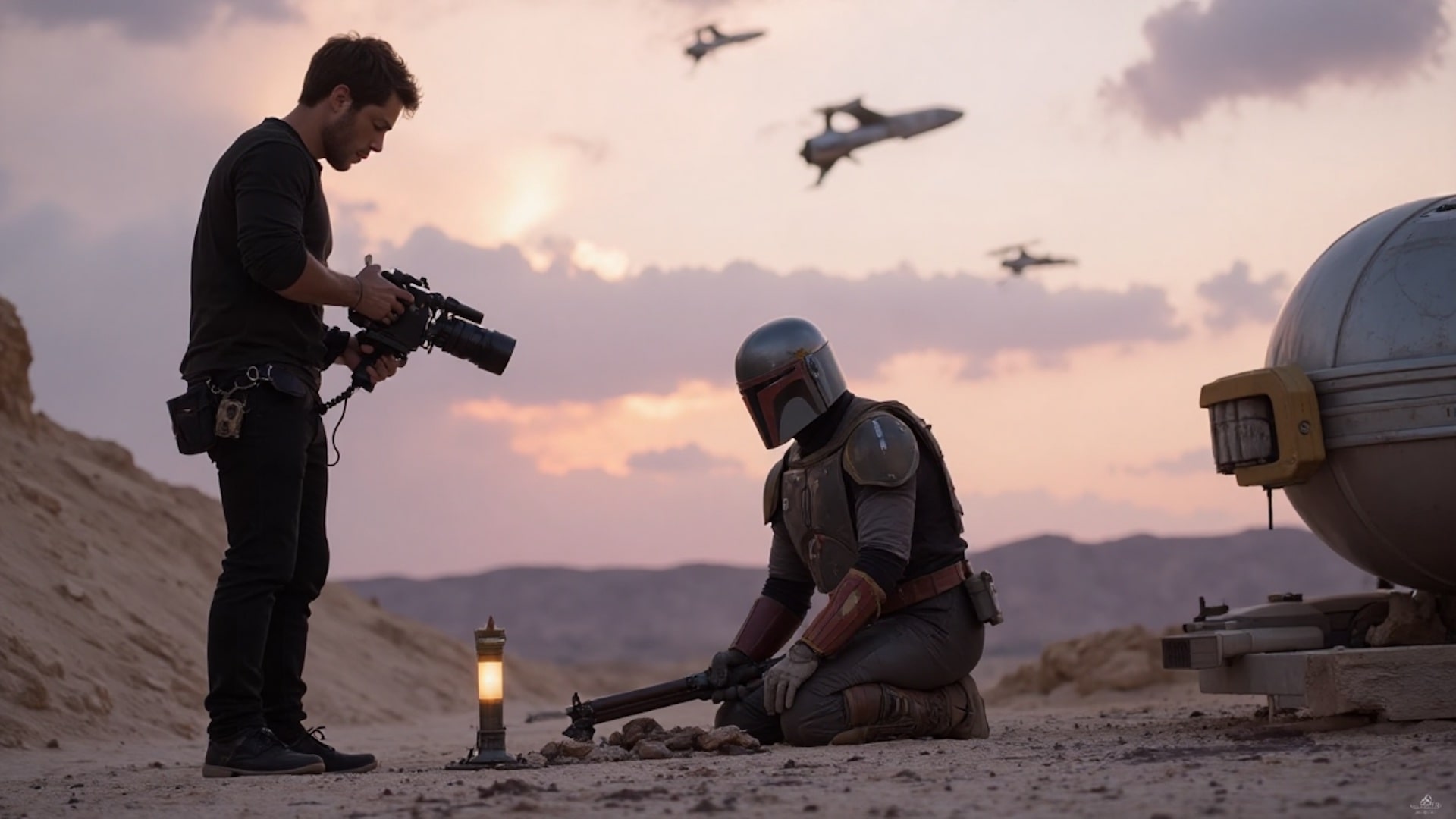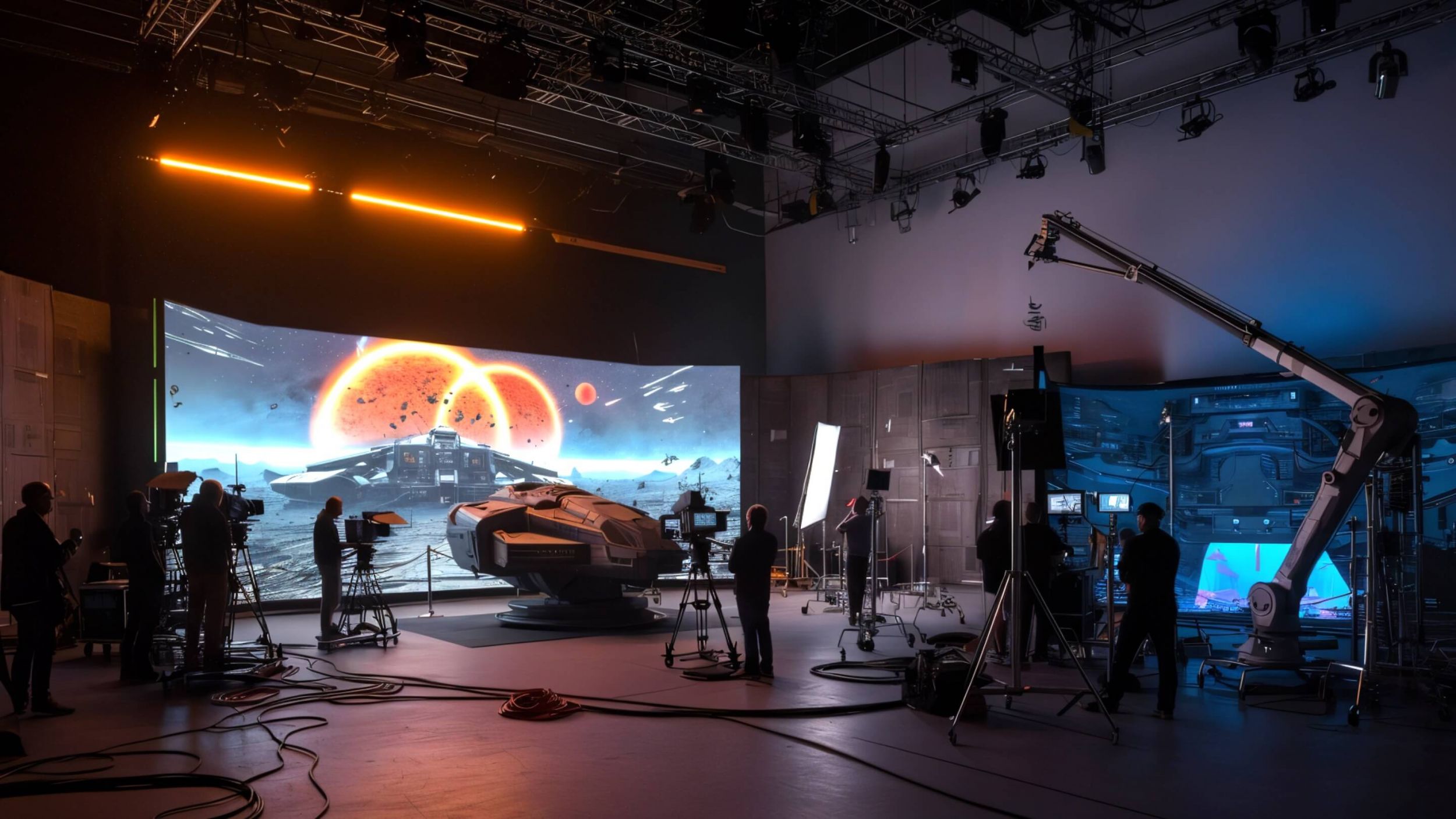Virtual production is a fast-growing technique in the film and television industry. It offers filmmakers new ways to create engaging content with greater flexibility and efficiency. But what is virtual production? It combines traditional filmmaking methods such as motion capture and facial recognition with digital visuals. And this groundbreaking technology opens up exciting possibilities for directors and producers looking to produce something completely unique. This blog will explore how it works, and the benefits that it offers to those creating content in today’s landscape.
What is Virtual Production?
Virtual production technology explained
If you think about it, filmmakers are a lot like magicians. Both create illusions that they hope the audience never figures out. One cinematic magic trick we've seen throughout film history is the illusion of placing a character into an environment that's not really there.
Technologies like rear-projection and front-projection were early options. Later, shooting with a green screen became the dominant method. And now we have the next step in that evolution.
Let’s take a look at the virtual production definition to understand how it works and why it's beneficial.
VIRTUAL PRODUCTION DEFINITION
What is virtual production in film?
Virtual production is a method of filmmaking and television production that uses computer-generated imagery (CGI), augmented reality, motion capture, and other technologies to create realistic environments and effects on a virtual set. It allows filmmakers the freedom to create sweeping vistas, vast landscapes, and convincing creatures from the realm of imagination. Virtual production (aka VP) can be used for both live-action and animated projects.
What is Virtual Production Used For?
- Creates sets and environments quickly
- Reduces the cost of traditional sets and props
- Enables filmmakers to make instant adjustments
- Allows for a more natural and controlled lighting setup
What is Virtual Production in Movies?
How does virtual production work?
The main process behind virtual production is the integration of different technologies. These include CGI, motion capture, facial recognition, laser scanning, robotics, Augmented Reality (AR) and more into one platform.
Most commonly, this is achieved through the Unreal Engine and software such as ILM’s Stagecraft.
This platform allows directors to manipulate many aspects of their productions in real-time — from setting up camera angles and lighting to controlling special effects. This allows them to create an environment where directors have enhanced creative control over every aspect of the process.
This also means that all of the CG work that would have normally been completed in post-production now needs to be ready during pre-production. Here's an image of the old pipeline vs. new virtual production pipeline.

Virtual production pipeline
Most commonly, virtual production is achieved through sets made with LED walls. This typically works by projecting images generated by a computer from the wall. These projections can be used to create sets, backgrounds, and interactive environments that appear realistic onscreen.
This type of virtual production allows for filmmakers to get creative with the scenery and settings for their projects in ways that weren't possible before.
For example, using an LED wall in virtual production means that directors can make instant changes to a scene without having to wait while set designers recreate sets or bring in new props.
They can simply adjust the projected image as needed.
Additionally, LED walls are often used in conjunction with augmented reality, which adds extra layers of interactivity to scenes. This enables directors to more easily add special effects like rain, snow, explosions and more.
Virtual Production In-Camera VFX BTS • Unreal Engine
Some notable examples include The Mandalorian (2019), Avengers: Endgame (2019), Blade Runner 2049 (2017), Jurassic World: Fallen Kingdom (2018) , Rogue One: A Star Wars Story (2017) , as well as Disney's animated film Frozen 2 (2019).
Here's an inside look to how The Mandalorian used this technology.
The Mandalorian • LED Volume Virtual Production
All these films used various forms of cutting-edge technology such as motion capture, CG animation & graphics technology integrated into one platform for seamless digital shoots.
Related Posts
What is Virtual Production Used For?
Benefits of virtual production
Technology has had a huge impact on the filmmaking industry. With virtual production becoming more and more common in large scale productions, one might wonder why? Let’s take a look at a few benefits of virtual production.
Flexible locations
Virtual production allows the filmmaker to work from any location. This allows them greater freedom and flexibility when it comes to shooting.
This means they can create content in more places like a beach or mountain. Which would have been impossible with traditional filmmaking methods. Additionally, this technology eliminates the need to physically build sets, reducing time and cost associated with traditional filmmaking.

Virtual Video Production Benefits for Filmmakers
Lighting control and efficiency
Using LED wall virtual production can help with lighting. This is because the walls provide a blend of both traditional and digital lighting. Consequently, filmmakers have more control over the look and feel of their scenes.
This can be done by adjusting the colors, brightness, contrast and shadows that come from a digital source.
Additionally, filmmakers can easily create different lighting scenarios faster than with traditional methods or natural light sources. This helps to save time and make sure that each scene looks exactly how it was intended to be seen.

Virtual Film Production
Performance
Virtual production can help an actor's performance by giving them the ability to act in a virtual environment with realistic visuals and motion capture data. That way, actors to perform with greater realism as they interact with digital characters, scenery, props, and special effects.
Virtual production also gives actors the opportunity to rehearse scenes in pre-production without the need for costly sets or equipment.

Virtual Production
This gives them more time to perfect their character and practice the scene multiple times before shooting starts. Furthermore, actors can use visual monitoring tools to see how their performance is coming together in real-time. Otherwise, they'd have to constantly stop and review footage.
Virtual production has improved the filmmaking process tremendously and allowed actors to give more natural performances that feel closer to reality.
Here's a look behind the scenes at 1899, including how the actors approach their work differently than with green screens.
Behind the Scenes of 1899 and the LED Volume
The future of this technology in the film industry is undoubtedly bright. It has the potential to revolutionize the way filmmakers create content. Filmmakers will be able to produce highly detailed and realistic visuals faster and with greater efficiency.
This could lead to lower production costs, allowing studios and independent filmmakers alike to access more resources for their projects.
With more large-scale movies and television series utilizing the technology, don’t be surprised if you soon find some of your favorite indie films taking advantage of the technology.
Up Next
What is VFX?
Speaking of technology that revolutionized filmmaking, VFX will continue to evolve with the emergence of virtual production. Take a look at our next article to learn more about how filmmakers use VFX and why it has become so valuable in the industry.
Up Next: VFX Explained →
Showcase your vision with elegant shot lists and storyboards.
Create robust and customizable shot lists. Upload images to make storyboards and slideshows.
